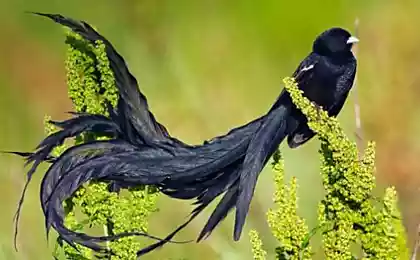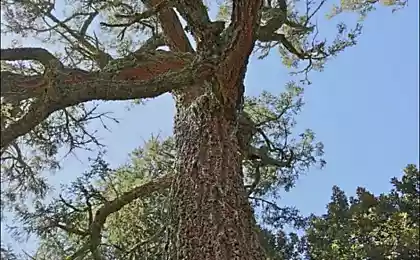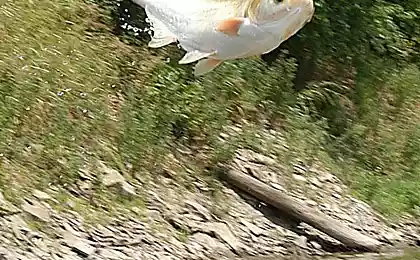978
Physics in the world of animals: woodpecker and his "jackhammer"
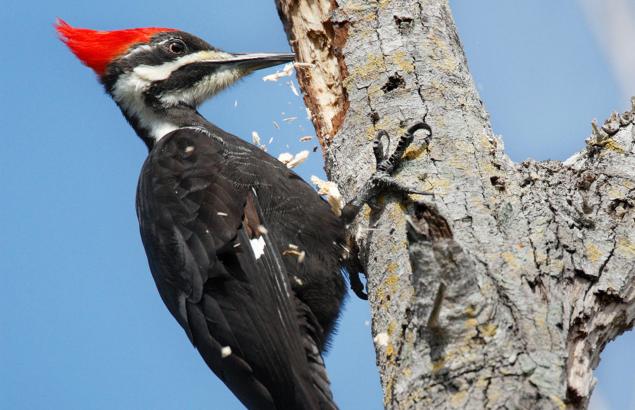
Source: audubon.org
Woodpeckers (lat. Picidae) — a large family of birds, which includes 233 species. In most cases, the woodpeckers live in forests. This tree-climbing arboreal birds that fly, although not very well. The vast majority of members of the family differ from other birds unusual chisel-shaped beak. With the help of the woodpeckers peck the bark and pith of a tree, trying to find the main food: insects and their larvae.
Your strong beak woodpeckers used not only for food, but also to create nests, which are usually arranged in the hollows of trees. Knock on wood woodpeckers and to communicate with each other. In the spring the males of many species of woodpeckers drumming their beaks on dry trees. These songs have probably heard many readers. The body of the woodpecker is almost perfectly adapted to his lifestyle. Because of this woodpecker can withstand heavy loads, which is deadly for many other living organisms.
Dolblenie wood is a very energy consuming activity. In order to replenish energy stores, woodpeckers have to eat constantly. For example, the black woodpecker in just one "meal" can eat some thousands of ants of several hundred larvae of bark beetles. Green woodpecker eating and even more — the day he eats about two thousand ants.
Woodpeckers call the orderlies of the forest, and it is, in principle, really. The bird eating a large number of larvae of pests of trees or adult insects prevents the uncontrolled increase in the population of pests.
The load that can withstand woodpecker
The average speed of strikes of a woodpecker — 20-25 movements per second. The total number of strikes, a woodpecker on the tree in day — 8000-12000. In order that the bird had the ability to withstand overload associated with slotting trees, its skull and skeleton have to be extremely strong. If the tree with such speed beat any other bird, then after a few blows she would die from overload.
Measurements show that the overload experienced by the woodpecker reaches 1000 — 1200g. It is much more than can withstand the organisms of other animals, including humans. We are not able to withstand the overload more than 80-100 g. The biggest (short-term) overload of the vehicle, in which a man managed to survive 179,8 g. Skydivers at the opening of the parachute experience g-forces up to 10 g. Pilots performing aerobatics, get overload up to 12 g.
The beak of a woodpecker is strong enough to peck a tree and not break or deform. The tip of the beak of most species of woodpeckers are similar to chisel. Due to this, birds can "work" with the strongest types of wood. The active space is increased the temperature of the brain. So the woodpecker can peck, he has to take breaks to reset the temperature.
The woodpecker is not only durable skull and beak. This bird is equipped with a "shock-absorber" in the form of cerebrospinal fluid, which suppresses the vibration. Depreciation system woodpecker also includes elastic beak, a springy wiry and hyoid bone (geoid), and a special cancellous bone in the head. Geoid — this is more cartilage than bone. It is not only in the throat, but also comes in the nasopharynx, wrapping the skull. Thus, the skull of a bird represents one of the most perfect natural shock absorbers.

Softens the blow not one factor but a whole system. During chipping the wood the beak is moving perpendicular to the surface, which is a woodpecker. The head of a woodpecker is moving at a speed twice the average velocity of a bullet flying from the muzzle of the gun. If the blow was delivered not perpendicular, but slightly at an angle, damping mechanism, birds would not have worked and she would just die. But here it works a coordinated system of muscles that allows the head and beak move in a straight line. Upon impact of the bill immediately triggered muscle that pulls the woodpecker's skull from the scene of the strike.
Protected from impact and bird eyes. When hitting the tree in the eyes of the woodpecker drops third eyelid (the nictitating membrane). It protects the eyeball from vibration, preventing stratification of the retina.
Another unique feature of the woodpecker — his long tongue. In all birds the tongue is attached to the back of the beak. But the woodpecker has a tongue coming out of the right nostril, separating into two halves. These two halves cover the bird's head and neck, leaving through the hole in the beak. Then they connect. The language of woodpeckers to get the insect larvae from deep moves done in wood.
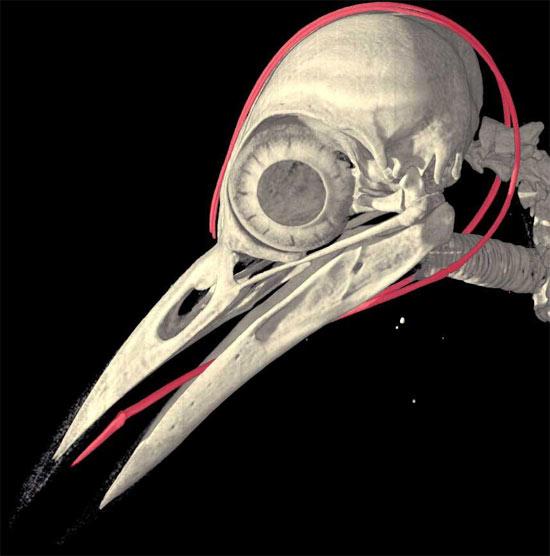
In order to place within the skull, all of these damping devices, the woodpecker had to sacrifice the size of the brain. In the process of evolution it has decreased. Moreover, the decrease in the volume of the brain has led to the fact that woodpeckers have become "stupider". In fact, woodpeckers have a high organization of behavior. They have complex territorial and breeding habits.
But birds have for "intelligence" responsible striped calf, and the layer which is called hyperstriatum. These parts of the brain small in size, so that the woodpecker can do a relatively small brain.
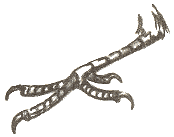
Well, in order to easily navigate through the trunks of trees, woodpeckers used X-shaped structure of the legs. Two fingers on the foot of the woodpecker is directed forward and two backward. The majority of birds of other species three toes directed forward and one backward. To keep the bark help a tenacious claws, strong finger bones and tendons. All of this ensures reliable adhesion to the tree, and the woodpecker does not fall even during the most active "work".
Source: geektimes.ru/post/280806/












